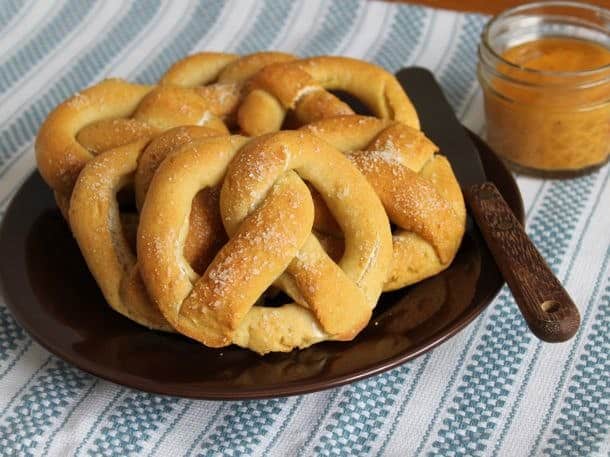
Soft pretzels are just about perfect. They’re chewy, salty and great with everything from a beer to a salad. The thing is: they’re chewy. And gluten-free flour doesn’t do chewy well.
But this year I decided I didn’t want to go through another football season or Oktoberfest without a soft pretzel. So I headed into the kitchen.
Since gluten, the protein found in wheat and other grains, is responsible for the distinctive soft pretzel chew, I began by focusing on the flour blend. The flavor of pretzels is rather subtle I first used white rice flour and tapioca starch. I hoped the white rice flour would be bland enough to fade into the background while the tapioca starch, along with a little xanthan gum, provided chew. It worked. Sort of.
The white rice flour was so bland that the pretzels tasted flat, and since I only used a little tapioca starch, there was very little chew. One of my first tasters said, “These taste like they want to be soft pretzels but just aren’t. They’re odd.”
Since I didn’t want bland pretzels, I replaced the white rice flour with brown rice flour. While the flavor was better, the pretzels were unappetizingly grainy. Combining the white rice flour and brown rice flour solved this problem.
During testing, I increased the amount of tapioca starch in the recipe. From previous experience, I knew that too much tapioca starch could make a recipe gummy. I added it cautiously, and one day, after using 3/4 cup of tapioca starch, I pulled a baked pretzel apart. There was some resistance as I tore the pretzel and the crumb had the tight appearance of wheat-based soft pretzels. When I took I bite, the pretzel felt chewy! Finally, a gluten-free soft pretzel that was chewy and flavorful.
But texture isn’t the only characteristic unique to soft pretzels. They need to be dark brown and shiny. Commercial bakers achieve this by boiling the pretzels in water with a little food-grade lye, a powerful alkaline. The solution turns the dough slightly yellow during boiling and aides the Milliard reaction during baking ,causing the pretzels to darken.
Since I didn’t have any lye on hand, (and I’m guessing you don’t either!) I used an alkaline that I did have in the kitchen: baking soda. While baking soda isn’t nearly as powerful an alkaline as lye, it did turn the dough slightly yellow during boiling. The finished pretzels, however, were a little too light for my liking.
Adding additional baking soda wasn’t solving the problem. On a whim, I added some granulated sugar to the solution. I hoped the sugar would help turn the pretzel a nice golden brown.
It worked! And best of all, the additional sugar didn’t add sweetness to the pretzels, just a lovely golden brown color.
Now, with a pretzel in hand, I’m ready for football season!
Here’s how to make ’em!
You want the dough stiff but not dry. Don’t worry if it doesn’t form a dough ball in the stand mixer. It won’t.
After two minutes of mixing, no dry ingredients should cling to the bottom or sides of the mixing bowl. If dry ingredients remain, add one to two tablespoons additional water.
Turn dough out onto a lightly white rice floured surface. Don’t use too much flour. A light dusting to prevent the dough from sticking to the counter is all you need.
Gently knead dough into a ball. Gluten-free dough requires a light touch. Once the dough forms a ball, stop kneading and place into a lightly oiled bowl to rise. Brush or spray the top of the dough with oil to prevent a skin from forming.
Allow dough to rise until doubled in size. This usually takes about an hour but the time varies depending on temperature.
Turn dough onto a very lightly white rice floured counter. Too much flour on the counter makes it hard to shape the pretzels. A light dusting of white rice flour will do.
Divide dough into equal portions. (A bench scraper works well for cutting the dough.)
Knead each dough ball until it becomes smooth. It should lose its shaggy appearance.
Roll out into 12-inch log. Take care not to use too much flour on the countertop. If the dough has too much flour on the surface, brush it off with a pastry brush. Cover the other pieces of dough with a piece of plastic wrap.
Gently turn dough into an upside down “U.”
Twist ends together.
Press the ends into the bottom of the “U”. You want to be sure the dough sticks to itself, so it doesn’t come apart while boiling.
Boil the pretzels until they float.
Once boiled, the pretzels turn slightly yellow. (The four pretzels on the left have been boiled. The two pretzels on the right have not been boiled.) Sprinkle some kosher salt on the pretzels and bake.

Enjoy!
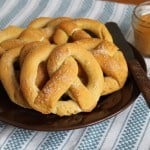
How to Make Chewy Gluten-Free Pretzels
Ingredients
For the Pretzels
- 2 cups finely ground white rice flour (8 ounces; 226 grams)
- 1 cup brown rice flour (5 ounces; 142 grams)
- 3/4 cup tapioca starch (3 ounces; 85 grams)
- 1 teaspoon salt
- 1 teaspoon xanthan gum
- 1/2 teaspoon baking powder
- 1 cup warm water plus 2 tablespoons (9 ounces; 255 grams)
- 1 packet active dry yeast (2 1/4 teaspoons)
- 1 large egg (1 3/4 ounces; 50 grams)
- 3 tablespoons light corn syrup (2 ounces; 56 grams)
- 2 tablespoons vegetable oil (3/4 ounce; 21 grams)
For the Water Bath
- 16 cups water (128 ounces; 3.6 kilos)
- 1/4 cup baking soda
- 2 tablespoons granulated sugar (1 ounce; 28 grams)
For the Topping
- Kosher Salt
Instructions
-
For the Pretzels: In the bowl of stand mixer, combine white rice flour, brown rice flour, tapioca starch, salt, xanthan gum, and baking powder. Whisk to combine.
-
In a small bowl, combine 1 cup warm water and active dry yeast. Stir with a fork. Allow to stand for three minutes. Add water-yeast mixture, egg, light corn syrup, and vegetable oil to dry ingredients.
-
Fit stand mixer with paddle attachment. Mix on medium speed until dough forms, about 4 minutes. The dough should be firm but not dry. If any dry ingredients remain at the bottom of the bowl or if the dough seems dry, add the additional 2 tablespoons water.
-
Turn dough out onto lightly white rice-floured counter. Dust your hands with white rice flour and knead dough into a ball until smooth. Take care not to use too much pressure while kneading.
-
Transfer dough to lightly greased bowl. Lightly brush the dough with oil. Cover the bowl with plastic wrap and allow to rise until almost doubled in size, about 1 to 1 1/2 hours.
-
Adjust oven racks to middle position and preheat oven to 425°F. Bring 4 quarts of water to a rolling boiling. Turn dough out onto a very lightly white rice floured countertop. Punch down dough gently to deflate. Cut into 12 pieces. Cover dough with plastic wrap. One at a time, knead each piece of dough until smooth. Then, roll out the dough pieces into 12 to14-inch logs. (You want little to no white rice flour on the area of the counter where you are rolling the dough. If there is too much flour on the outside of the dough, the pretzel dough won't stick to itself when you go to shape it.)
-
Line two rimmed baking sheets with parchment paper. Working one log at a time, form the dough into a into "u". Twist each end together and then press the rope into the bottom of the "u". You want to press the dough firmly to ensure the ends stick to the "u" or the pretzel can unravel during boiling. Place shaped pretzels on prepared baking sheet.
-
Prepare the Water Bath: Add the baking soda and granulated sugar to the boiling water. One at a time, boil the pretzels. If the pretzel floats, boil for about five seconds. If the pretzel sinks, wait for it to float to the top of the water and then remove. Return boiled pretzels to the prepared baking sheets. Sprinkle generously with kosher or pretzel salt.
-
Bake until golden brown, about 25 minutes, rotating baking sheets halfway during baking. Remove and allow pretzels to cool. Pretzels are best served the day they're made. If desired, freeze once cooled and reheat in a warm oven.
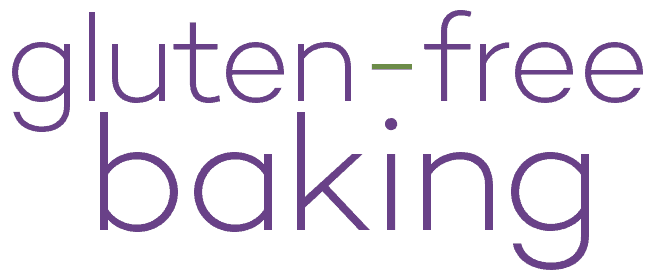


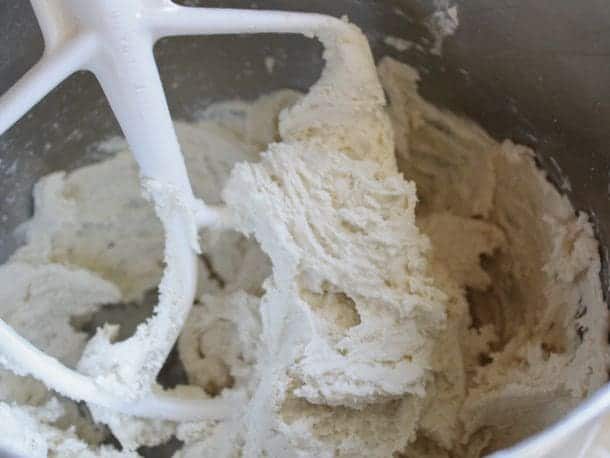
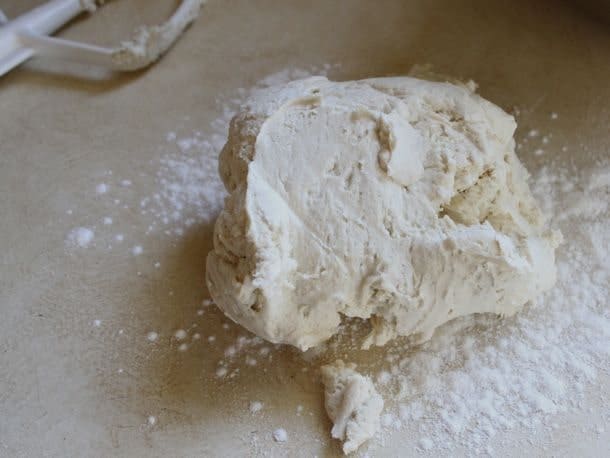
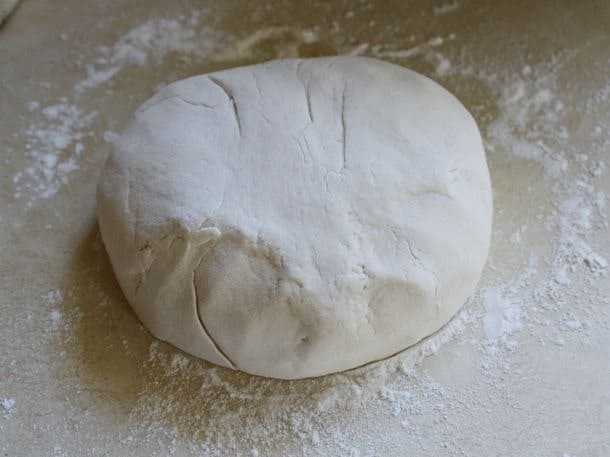
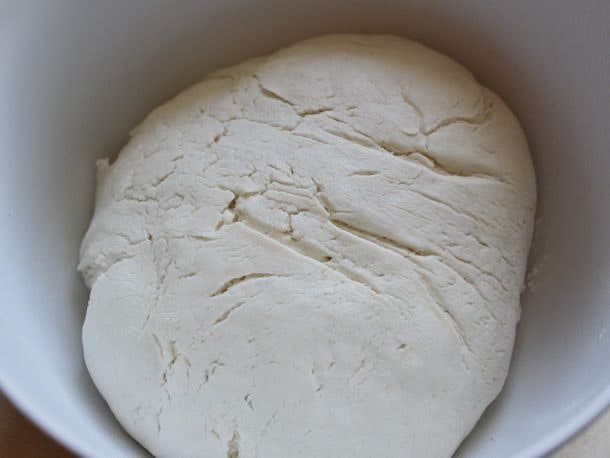
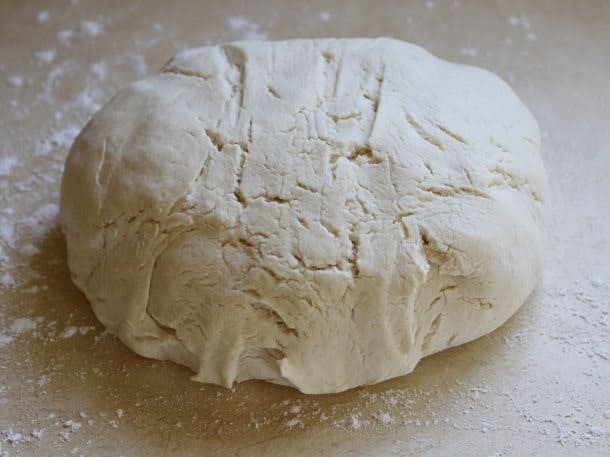

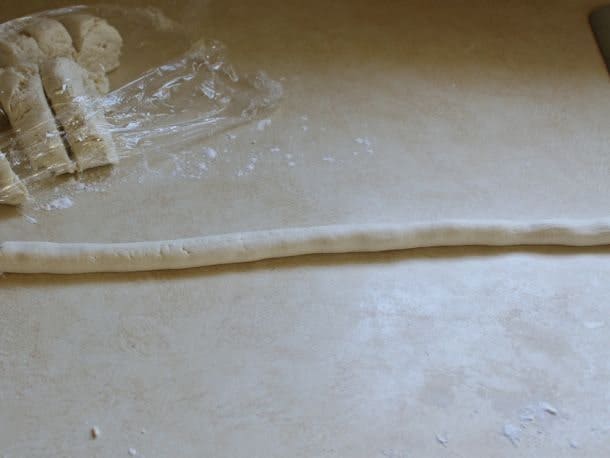
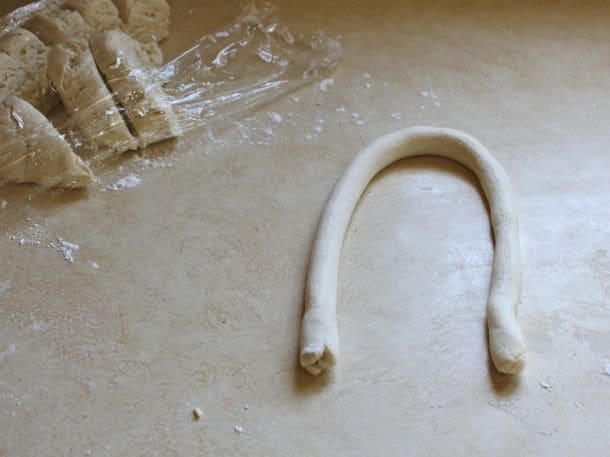
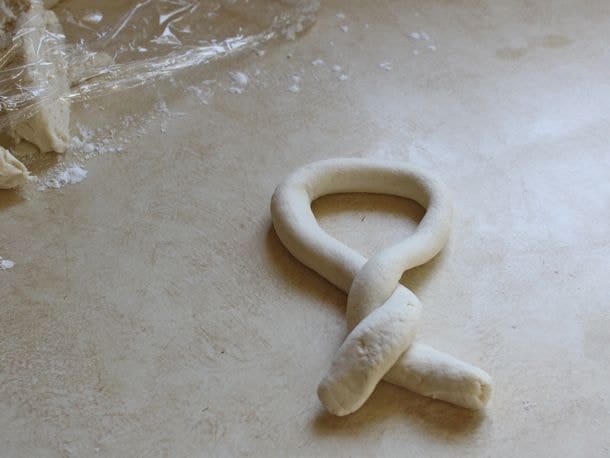
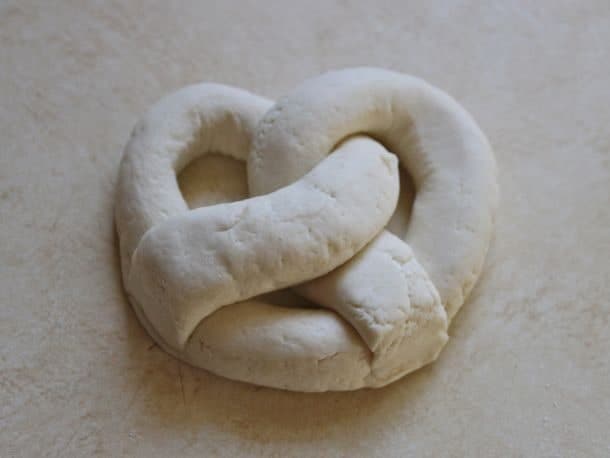
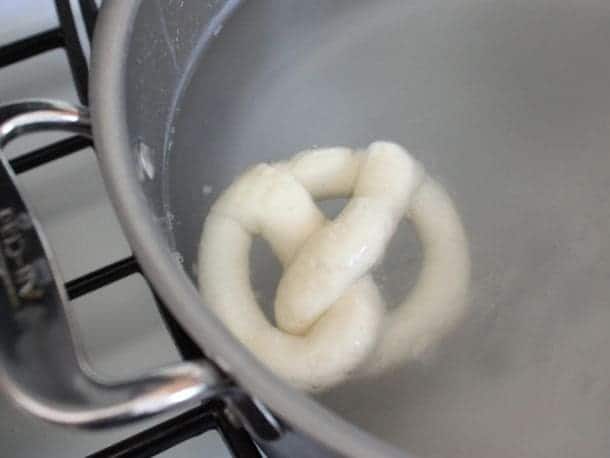
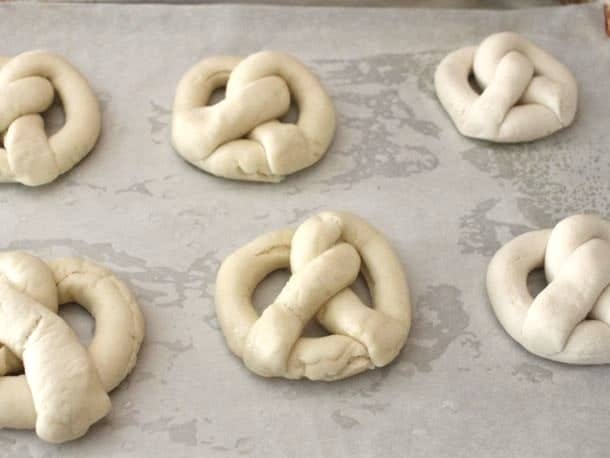
Andrea says
Can you tell Me what can be substituted for the the corn syrup and the egg? These look so good, just can’t have either of those ingredients.
Elizabeth says
You could substitute honey for the corn syrup. As for the egg, you could try a flax “egg” but I’m not 100% sure it would work in this recipe.
Marcin says
Can I use 1:1 gluten free baking flour? It’s a mix with all the ingredients needed from all the flours.
Elizabeth says
Marcin,
All 1:1 baking flours are different. The recipe might work with the blend; however, it might not. King Arthur, for example, states that their 1:1 flour isn’t good with some yeast recipes.
If you try it, let us know how it goes.
Janice says
We have made these once but we love this recipe due to the chew and taste. Tried others that were soft pretzels and will not repeat them. Thank you for all the testing as we are so happy to have found this!
I tried your recipe after reading your notes so please know all the details made me trust that you knew how to really bake gluten free. Great thanks from my son to you!
Elizabeth says
Glad you liked the pretzels!
Nicole says
I tried a recipe from a different source, and did something wrong at the boiling stage. Maybe it took too long for me to get all the bites (it was bites, not pretzels) boiled. The baking soda flavor was too strong on the pretzels. I think what happened is that as the water boiled away, the amount of baking soda became too strong. I tried to add water, but obviously that didn’t work.
Did you ever encounter a too-strong baking soda flavor? Any tips? Do you think I’m right in my guess?
I’m excited to try this recipe! Adding yeast to the shopping list!
Elizabeth says
Nope. I’ve never experienced a strong baking soda flavor.
Lisa says
WOW!! This recipe is amazing. The dough was so easy to work with and ours look just like your picture. I have not had a hot pretzel in over a decade… these are delicious! I might have had some tears of joy 🙂
I did have to make two substitutions, as I can’t have corn or eggs. I did an equal sub of agave nectar for the light corn syrup. I replaced the egg with 3 Tbsp of aquafaba (the juice from a drained can of chickpeas). I was worried this substitutions would mess things up, but miraculously they didn’t!
THANK YOU!!!
Elizabeth says
Glad you enjoyed it!
Molly V McDonald says
Just curious, why do you use corn syrup instead of sugar brown or white? Also, I’m wanting to make bites, is the water to soda ratio different for bites, do I still boil them until they float?
Elizabeth says
Corn syrup holds on to moisture MUCH better than either white or brown sugar. It gives these pretzels the perfect texture.
As for the boil, the water to soda ratio remains the same. And, yes, boil until they float!
Cassandra says
My parents and I went to a pretzel-making party a few years back, where lye was used. Those pretzels were delicious! However, seeing as how I need to strongly avoid gluten, dairy, and corn, the pretzel-making party is still fun, though I cannot eat the final product ?
All of this to say … thank you for this recipe (and your efforts in baking)! ? My stomach will thank you!
Kirsten Gerbic says
Thank you so much for this recipe! Homemade soft pretzels are one of my family’s favorite treats but since our littlest was diagnosed with celiac I have felt terrible about filling the house with the delicious smell of something that she cannot eat. She was so surprised and grateful to find out that she could safely enjoy these pretzels. So many gluten free yeast bread recipes are fussy, complicated or have a daunting list of ingredients but this one works beautifully just as written. For 1/2 of the batch, we skipped boiling, brushed the raw pretzels with beaten egg, sprinkled with coarse salt and baked as directed. That version browned well and tasted delicious also.
Kirsten Gerbic says
Fantastic recipe. Thank you so much. We enjoyed the pretzels that were boiled before baking and also had success brushing the raw dough with beaten egg before sprinkling with coarse salt. Both methods resulted in delicious, golden brown pretzels.
maggie says
can i make these in advance or will they turn hard when they cool?
Elizabeth says
If wrapped well, these should stay soft for a day or so. They won’t get hard, per se, but they will stale over the course of a few days.
Debra says
Can you make large batches and freeze them?
Elizabeth says
Yes! Be sure to allow the pretzels to cool fully before freezing.